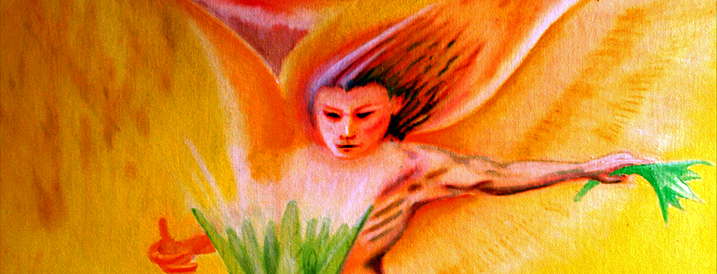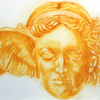
Tarot Fool
Tarot Fool
Tarot Fool in the image of Lucifer. We reach for what we already possess. New endeavours offer us the potential of the abyss. Taking a leap of faith.
Traditionally, the Fool embodies innocence and a leap into the unknown. Merged with Lucifer—the “light-bringer” and fallen rebel—this figure becomes a symbol of paradox: the quest for self-mastery through defiance of conformity. Lucifer’s pride is reframed here not as hubris but as audacity to trust one’s inner voice, even when it risks alienation or failure. The Fool’s “leap of faith” mirrors Lucifer’s fall as a descent into self-awareness, where the abyss becomes a crucible for transformation.
 Tarot Fool reaches for what is already possessed.
Tarot Fool reaches for what is already possessed.
This speaks to the illusion of seeking externally what is internal. The Fool’s journey is not about acquiring new truths but awakening to latent potential, like Lucifer, who sought divinity only to realise it was his birthright. The Fool’s risk-taking exposes the paradox of desire: enlightenment lies in recognising one’s inherent wholeness, yet striving is necessary to dissolve ignorance.
New endeavours offer us the potential of the abyss of the unknown.
Taking a leap of faith.
The abyss symbolises both terror and liberation. Those clinging to conformity (the “hands”) fear the unknown, resenting the Fool’s freedom. Their lack of faith in themselves traps them in collective norms. The Fool/Lucifer, by contrast, embraces the void as a mirror confronting the shadow self, fears, and repressed intuition. Here, the abyss is not emptiness but the subconscious, where inspiration arises unbidden.
The Fool risks all in an attempt to obtain what is already possessed.
The Fool is the seeker, an adventurer, acting from an impulse of inspiration as opposed to knowledge.
Tarot Fool and Bicameral Mind Theory
Referencing Julian Jaynes’ theory, the Fool’s actions—driven by “hallucinated” voices or images—evoke a pre-rational state where intuition supersedes logic. This aligns with the Fool’s impulsive nature, acting on raw inspiration rather than calculated knowledge. In a modern context, this could symbolise the subconscious mind guiding leaps of faith, where creativity and rebellion emerge from uncharted psychic depths. The risk? Without reflection, such impulses might lead to chaos (Lucifer’s fall), but with self-awareness, they become revolutionary acts of authenticity.
Conclusion:
To risk everything for self-realisation is to embrace Luciferian defiance: a fall into the self, where light and shadow coexist. The Fool’s “leap” is both destruction and rebirth—a dance with the abyss that transforms fear into faith. Here, the seeker becomes the sought, and the true rebellion is trusting one’s inner voice in a world of noise.
Other Elemental Tarot Cards
Fire Tarot Judgment
Water Tarot Hanged Man
Earth Tarot Universe
Tarot of the Morning Star book reprinted

Leave a comment